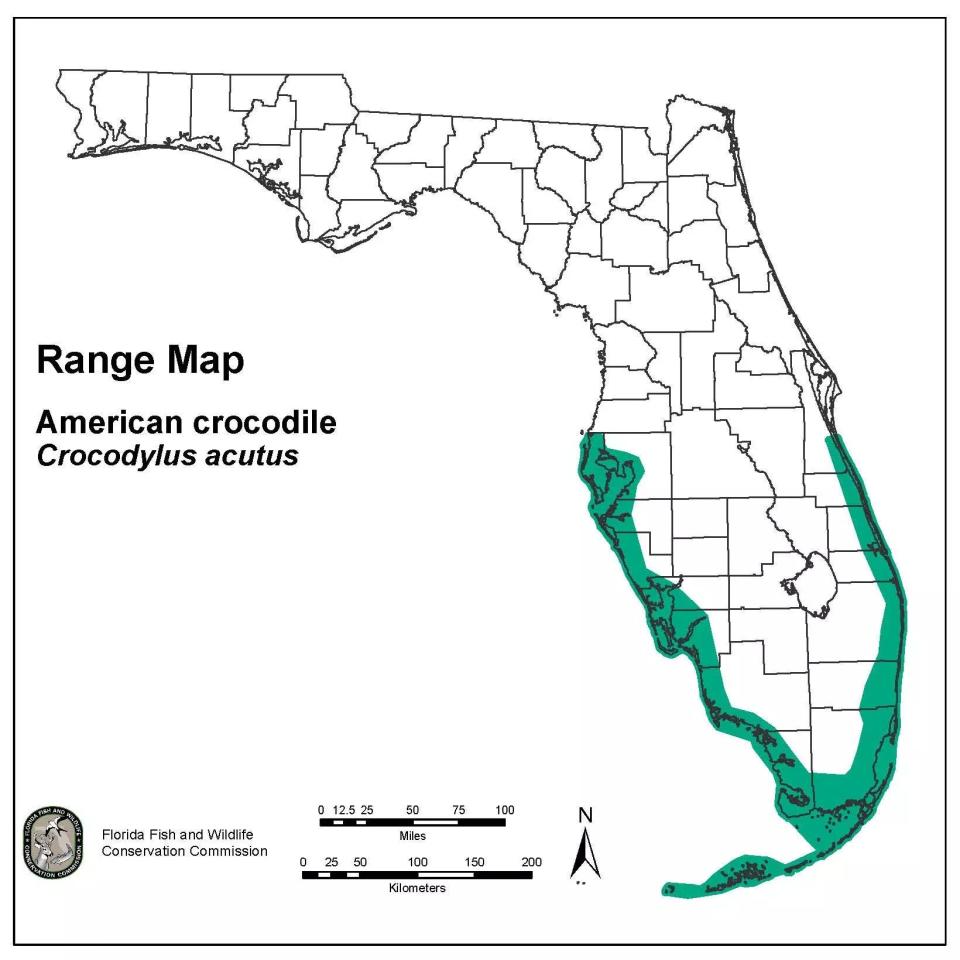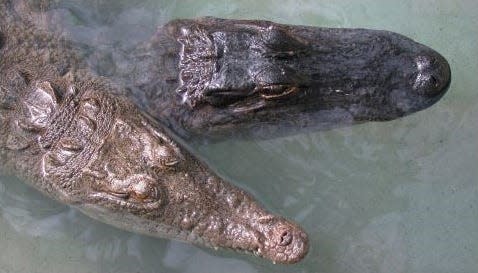Crocodiles in Florida? Here's what you should know about the reptile making a comeback
PORT ST. LUCIE, Fla. — Say the word crocodile and many people think of Australia, the Amazon or even those National Geographic specials showing huge reptiles ambushing wildebeests crossing rivers.
But there are American crocodiles and there have been recent sightings in Florida .
As development continues to expand in the Sunshine State, more sightings are likely. The Florida Fish and Wildlife Conservation Commission estimated the number of Florida crocodiles have increased to as many as 1,500 to 2,000 adults, coming back from an estimated 300 in 1975.
The Florida population of this native species is classified as threatened by the U.S. Fish and Wildlife Service.
With increasing numbers of crocodiles in areas where people live throughout the state's west and east coast, Florida is experiencing a growing number of complaints about nuisance crocodiles.
Here are some answers to questions about the American crocodile.

More: This crocodile-like predator roamed Iowa's waters more than 300 million years ago
Later, gator?: One-fifth of all reptile species could go extinct, new study says
Are American crocodiles aggressive?
American crocodiles are considered shy and reclusive.
Since crocodiles are coldblooded, they can be seen warming up by basking in the sun. If surprised, they'll quickly (and noisily) enter the water, which indicates they were frightened. Crocodiles normally enter the water quietly.
Crocodiles can also be seen sunning with their mouths open as they regulate their body temperature or moving between warm and cold areas in the water.
How do you tell the difference between a crocodile and an alligator?

Here are some of the major differences between an American crocodile and the more numerous American alligator:
Crocodiles
Grayish green color
Fourth tooth on lower jaw exposed when mouth is closed
Narrow tapered snout
Young are light with dark stripes
Alligators
Black in color
Only upper teeth exposed when mouth is closed
Broad rounded snout
Young are dark with yellow stripes
Photos: See the stunning finalists, cast your vote for People's Choice Award's wildlife photo of the year
What do crocodiles eat?
Crocodiles eat almost anything that moves and some things that do not. The bigger the crocodiles, the bigger their prey, according to the University of Florida.
Natural prey for crocodiles include fish, reptiles, birds, and small mammals.
Animals that resemble their natural prey, such as dogs and cats, are more susceptible to being bitten by crocodiles when in or near the water.
How to stay safe around a crocodile
The presence of a crocodile is no reason for immediate concern, the FWC said. Often, the best course of action is to leave the crocodile alone.
People can safely co-exist with crocodiles by following these tips:
Swim only in posted swimming areas.
Swim only during daylight hours. Crocodiles are most active between dusk and dawn.
Do not allow pets to swim, exercise, or drink in water that may contain crocodiles as they closely resemble natural prey items of crocodiles. Always keep pets at a safe distance from the water.
Use fencing or other barriers to separate your pets and family from crocodiles.
Leave crocodiles alone. State and federal law prohibits killing, harassing or possessing crocodiles.
When observing or photographing crocodiles, always keep a safe distance from them.
Never feed crocodiles – it is illegal. When fed, crocodiles may become used to people and may be more likely to become a nuisance.
Inform others that feeding crocodiles is illegal and can create problems for people recreating in or near the water.
Dispose of fish scraps only in designated waste containers. Discarding scraps in the water may attract crocodiles.
Feeding other aquatic wildlife such as ducks, fish and turtles also can attract crocodiles by attracting potential prey animals.
What's everyone talking about?: Sign up for our trending newsletter to get the latest news of the day
This article originally appeared on Treasure Coast Newspapers: Crocodiles are making a comeback in Florida: What to know about them

